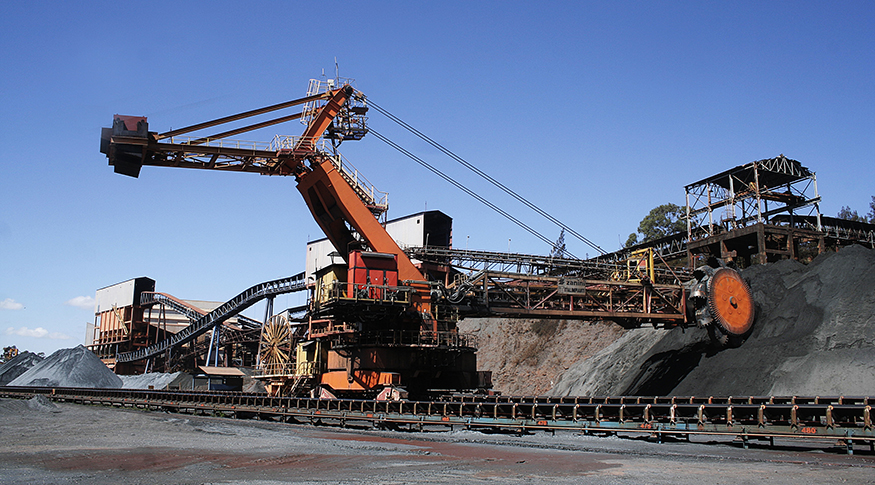Domestic industry
Industry records zero change in December and closes 2022 with a decrease of 0.7%
February 03, 2023 09h00 AM | Last Updated: February 03, 2023 04h22 PM
 Industry lost steam in the second semester and closed 2022 with a retreat - Photo: Roberto Rocha/Agência Vale
Industry lost steam in the second semester and closed 2022 with a retreat - Photo: Roberto Rocha/Agência ValeIndustrial production recorded zero change (0.0%) in December 2022, after registering -0.1% in November and 0.3% in October 2022, when it interrupted two consecutive months of negative rates with a cumulative drop of 1. 3%. As a result, Brazilian industry is 2.2% below the pre-Covid-19 pandemic level (February 2020) and 18.5% below the record level for the series, in May 2011. The data are from the Monthly Survey of Industry (PIM), released today (Feb 3) by the IBGE.
In the cumulative indicator in the year, the sector accumulated a decrease of 0.7% in 2022. In 2021, it had closed with an increase of 3.9%. The fall in 2022 is preceded by a rise in 2021, but previously, the industry had recorded two consecutive falls, in 2019 (-1.1%) and 2020 (-4.5%). According to survey manager André Macedo, industry has had a predominantly negative behavior in recent years. "Much of its growth in 2021 (3.9%) is directly related to the significant drop in 2020, caused by the beginning of the pandemic. It advanced in 2021, but growth was influenced by a low base of comparison and the losses of 2020 were not offset", he says.
Thus, throughout 2022, the industrial sector responded to the measures taken by the government to increase income, such as, for example, the anticipation of Christmas bonus for retirees and pensioners, release of the FGTS, adoption of measures to stimulate credit, cash transfer programs, as Brazil Aid and the one granted to truck drivers, among others. “Throughout the second half of the year, this response lost steam and the industry behaved with less intensity and more frequent negative results”, says Mr. Macedo.
The retreat of the national industry in 2022 is also explained by factors such as the rising interest rate, which directly affects credit costs, in addition to inflation, mainly in food, which impacts on household income and, consequently, on consumption, according to the manager. “There is also influence from the increase in nonpayment and debt rates. And the labor market, although having shown a clear recovery throughout the year, is still characterized by the precariousness of the jobs generated”, he adds.
The 0.7% drop at the end of 2022 affected all four major economic categories, in addition to most branches (17 out of 26), groups (54 out of 79) and products (62.4% out of 805 surveyed). “It is a widespread profile of retreat, which demonstrates that the national industry experienced, in 2022, a retraction that affects different groups and segments of production”, says Mr. Macedo.
The major influence came from the mining and quarrying sector (-3.2%), led by iron ore. Other segments also stood out, such as fabricated metal products (-9%), basic metals (-5%), electrical machinery, equipment and materials (-10.7%) and rubber and plastic products (-5.7% ).
On the other hand, among the minority of activities with expansion in production, coke, petroleum products and biofuels, which recorded a rise of 6.6%, exerted the greatest positive influence. “It is a sector that has kept a positive behavior throughout 2022, mainly driven by products with a greater connection with mobility”, exemplifies the analyst. “Finally, it is also worth remembering that it is a sector that had retreated in 2021 (-0.7%), that is, it started from a smaller base of comparison”, he concludes.
Drop against December 2021 was 1.3%
Compared to December of the previous year, industrial production fell by 1.3%, with negative results in two of the four major economic categories, 18 of the 26 branches, 45 of the 79 groups and 57.8% of the 805 products surveyed. It should be mentioned that December 2022 had one less business day (22 days) than December 2021 (23).
Among the major economic categories, the highest was durable consumer goods (-5.8%), followed by intermediate goods (-2.6%). The other two, semi-durable and non-durable consumer goods (3.1%) and capital goods (0.9%), recorded advances in the interannual comparison.
More about the survey
PIM Brazil has been producing short-term indicators since the 1970s relating to the behavior of the real output in the mining and quarrying and manufacturing industries. As of May 2014, the release of the new series of monthly industrial production indices began, after reformulation meant to: update the sample of activities, products and respondents; develop a new weighting structure for the indices based on the most recent industrial statistics, in order to meet the needs of the implementation project of the Series of National Accounts - reference 2010; and adopt the new classifications, of activities and products, used by other industry surveys from 2007 onwards, namely: the National Classification of Economic Activities - CNAE 2.0 and the List of Industry Products - PRODLIST-Indústria.
The survey results can also be consulted in the Sidra database.


















